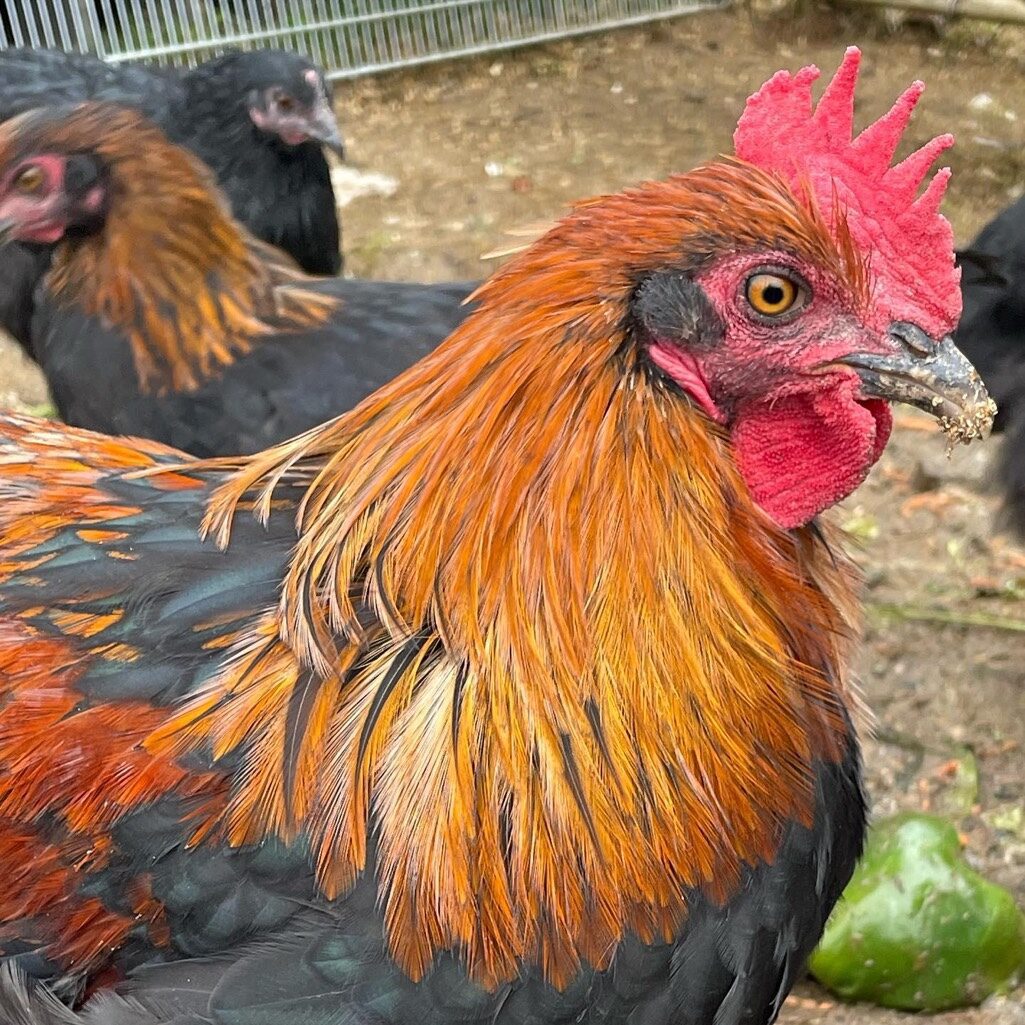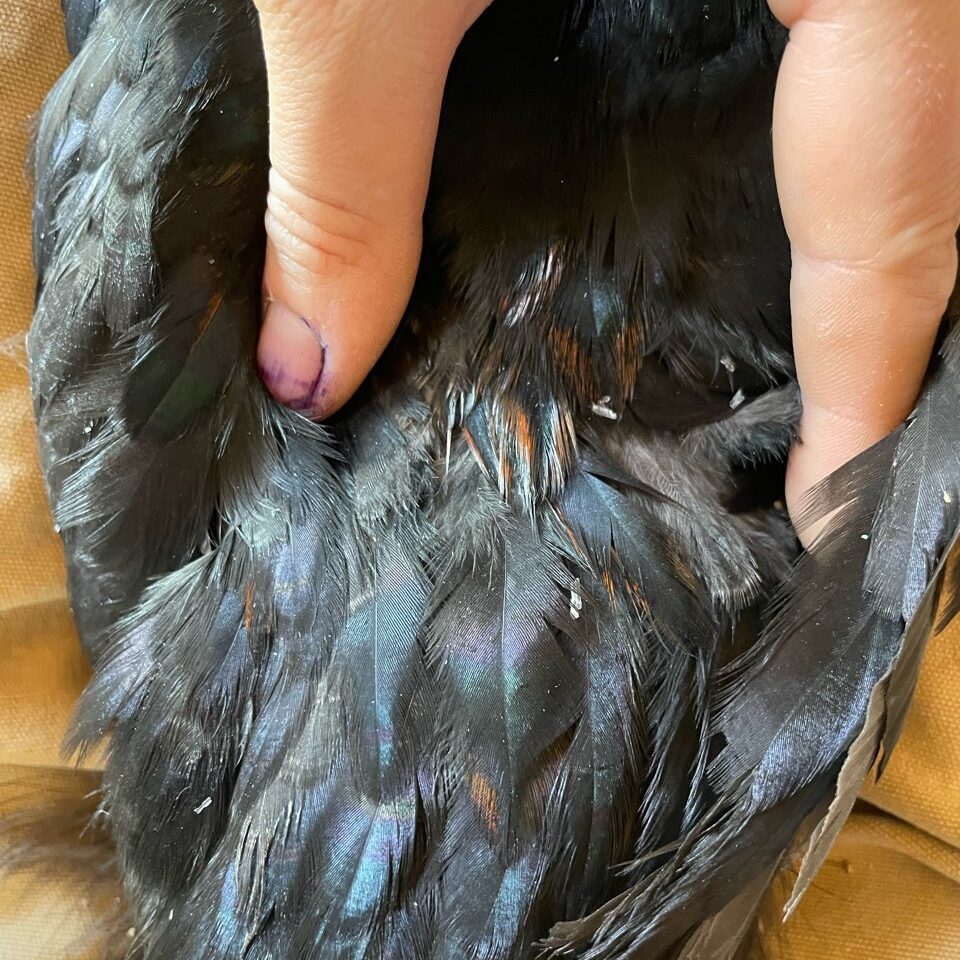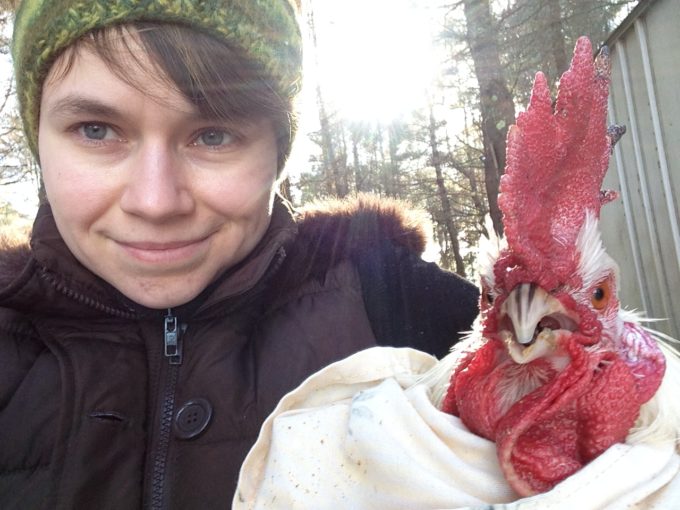LAST UPDATED SEPTEMBER 12, 2023
Let’s tease out the best ways for how to tell a hen from a rooster. The diagram below shows two very different looking chickens. Bu many breeds exhibit similar traits between hens and roosters. This includes breeds with short combs on both sexes, or on the flip side hens which have large brilliant red combs. Some roosters have very short tail feathers. In all these differences by breed, chickens do all have a few stark sex indicators.

- Ability to Lay Eggs
- Mating Position
- Crowing
- Aggression
- Spurs
- Feather Differences
- Face/Head Anatomy
Photo comparison of pea comb sexing
Sexing Lavender Ameraucana pullets and cockerels before saddle feathers emerge by comb
Lavender Ameraucana have a very short “pea comb” which makes telling the hens from the roosters a little harder. Here is a handy example of facial features that differ between the sexes. These photos were taken at 8 weeks, prior to tell-tale saddle feathers emerging.


PULLET IN PHOTO ABOVE: Lavender Ameraucana pullets have a pale pink to peach color comb that is thinner and more flat than the cockerels. Notice the pale tone of the skin at the base of the beak.
1: Only Hens Can Lay Eggs

I know, I know, this seems pretty simple—but it has to be said. If you have five hens and consistently collect five eggs a day and there is no crowing—you’ve got five hens. If you hear crowing but can’t figure out who’s doing it you could try separating the suspected crower to see if it leaves an egg.
This could take 24-48 hours. Make sure the suspect has water and food, and a comfortable place to lay an egg in to encourage it to do so. This is a simple and effective way of how to tell a hen from a rooster.
2: Just find the rooster’s penis, right?
Roosters have a few things that hens don’t—but neither of them have exterior sexual reproductive organs. All of their parts used to mate are tucked up inside their vents. Roosters only protrude the penis outside of the vent while mounting the hen for a very brief and somewhat violent looking interlude. But, if you are seeing one chicken mount another that is a simple way of how to tell a hen from a rooster. Just let them out of the coop and watch their behavior. No handling required.
3: Only roosters say “cock-a-doodle-doo”
Hens make an amazing array of vocalizations—many of the loudest are when an egg laying session is interrupted, a possible predator is being reported or there is a challenge to the pecking order. Hens cluck when the food is good and when the water is wet. They bawk at a fly on the wall or just to hear themselves. One of the best ways of how to tell a hen from a rooster is to listen for that classic crow. Hens simply can’t make the classic crack-of-dawn crow we all associate with the farm life. Only a rooster can do it. So if you hear a crow, it’s most certainly a rooster.
4: Roosters can have anger issues
Introducing a new rooster to a flock that already has one is a bad idea. They always fight and usually to the death, or until a daring (or foolish) person pulls them apart.

When a rooster becomes aggressive toward another bird or animal, they will raise their neck feathers into an impressive flat ring to make them look larger. It can be thought of as how a dog with raise his hackles along its back in the night when they hear a sound that doesn’t belong.
This is a voluntary function alerting the flock—or in the dog’s case a pack or human—there’s trouble afoot. It also shows the target they have been singled out and had better watch their step. At this point, the rooster will become very focused. Many will leap at the slightest thing while in this state. I have had a free ranging rooster do this to a mirror I set down while moving. If this escalates, they may use their spurs to inflict injury—or break a mirror.
Hens may have their squabbles, but not in the same way roosters do. I have seen a hen fluff out her neck at an intruding turkey. But there was no fight and she backed down—a rooster would likely have done neither. If you have exhausted all other options and want to know if you truly have a rooster then try setting a mirror where it would normally walk and watch how it behaves.
5: Hens don’t develop spurs
All chickens have a little lump where a spur will or will not develop, much like nipples on a human—but only the rooster will grow long pointed spurs. Another simple way of how to tell a hen from a rooster by simple observation is to look at the back of their legs for spurs. These pinnacles of rooster anatomy are much like thick cylindrical claws that come to a sharp point. If you have a chicken with spurs, it’s a rooster. Roosters are protectors of the flock and spurs are their defense. Young roosters will grow them rapidly in the first few months—but crowing is usually more obvious before the spurs are.
6: Roosters have different shaped feathers
At the base of the tail where it meets the lower back of the rooster lay a plume of long, thin feathers. These are called saddle feathers as they trail down either side much like a saddle. On the hen in this same area of the body are the same shorter rounded feathers found on the rest of her back and breast. Only the rooster will have these long, pointed feathers which are long enough to lay to either side, parting along the base of the tail. Just behind these feathers are the long plumes of bent and sometimes trailing feathers which are supported by the stronger tail feathers beneath them. Only roosters have these so-called sickle feathers and they are often brightly colored and very soft with almost no central rachis to hold them up.

ABOVE: The obvious long, pointed, narrow saddle feathers on this nearly-mature Marans rooster are an easy way to tell from a distance if you have a rooster. The females of this breed are solid black on their rumps.
BELOW: At only eight weeks, Marans chickens can be sexed by parting the upper black feathers on the top of their rump and looking below them for the brightly colored, thin, pointed feathers. This is a simple and effective way to tell. (Don’t mind the Blu-Kote on my thumb!)

7: Face and head anatomy

This varies so widely between breeds it’s best for you to look up the standard marking for your breed. Worse, if you have a flock of mixed breeds with unknown contributing breeds you may have a hard time telling a tall-combed single folded Breese mixed hen from an Ameraucana rooster with a teeny pea-comb.
For these complex and various reasons, comb—as many might think they are great indicators of adult chicken sex—are not the best way to figure out how to tell a hen from a rooster.
